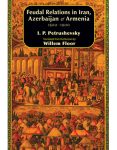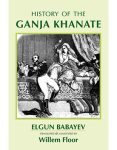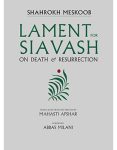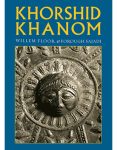About the Book
Located in the Straits of Hormuz, the island of Qeshm has had a tumultuous history. Qeshm: The History of a Persian Gulf Island is the first serious, book-length study of the island’s history.
From the fourteenth century onward, the island was an important dependency of the Kingdom of Hormuz, often providing drinking water to Hormuz. The island remained critical as a source of water and foodstuffs for the Portuguese, beginning in the early-sixteenth century. Throughout the seventeenth century, Qeshm remained a bone of contention between Portugal, the Dutch and the English East India Companies. Later, it was a coveted tile in the mosaic of Persian Gulf domination aspired to by the Soltans of Oman, despite the pretensions of the Qajar court. The natural resources of Qeshm include salt, the purest in the Persian Gulf, naphtha, and firewood. From Nader Shah’s naval ambitions to the commercial competition of the early-twentieth century, Qeshm features in innumerable mini-crises, both local and international. In 1935 the British abandoned their coaling station on the island at the insistence of Reza Shah.
Qeshm’s history stands in stark contrast to the popular image of this staid, somewhat sleepy island. This book, brilliantly researched by two of the foremost scholars of Iranian history, is essential reading for anyone interested in a region whose strategic, political, economic and financial importance continues to grow.
- Foreword xi
- The Island 1
Description 1
Name 4
Earthquakes 6 - Population and Settlements 9
The Towns 15
Brukht 16
Laft 17
Qeshm Town 23
Basidu 29 - The Economy 51
Trade 56 - Natural Resources 74
Salt 74
Sulfur and Red Oxide 82
Sponges 85
Oil Drilling 86
Banishment or Internal Exile 92 - History and Administration 95
Earliest history 95
Hormuz Kingdom 102
Qeshm Debacle and Fall of Hormuz (1621) 107 - Safavid Period 115
Attack on Qeshm 118
Gulf Arabs Rivalry 124
Portuguese intermezzo 132
EIC and Afghan troubles 137 - Afsharid Period 143
Banu Ma`in, Molla Ali Shah and Qawasem Fighting Over Qeshm - 155 Zand Period 177
The Persian-Omani Conflict 182 - Omani Period 187
The Omani claim to Qeshm 205
Omani rule challenged 215 - Qajar Period 222
- Pahlavi Period 233
- Modern Institutions 235
Customs 235
Police 241
Gendarmerie 243
Education 244
PTT 244
Medical Situation 245
The Basidu Affair 249 - Appendix I 279
Earthquake on Qeshm 1884 279 - Appendix II 291
Biography of Mo`in al-Tojjar 291 - Appendix III 295
Report on the salt caves and mines and trade in salt 295 - Appendix Iv 299
Diary of a Journey through the Districts of Minow, Shamil, and Kow Gunow During the Month of August, 1873 299 - Bibliography 321
- Index 347
About the Authors
Willem Floor studied development economics and non-western sociology, as well as Persian, Arabic and Islamology from 1963-67 at the University of Utrecht (the Netherlands). He received his doctoral degree from the University of Leiden in 1971. Since 1983, Dr. Floor was employed by the World Bank as an energy specialist, however, after his retirement in 2002, he has dedicated his time to the study of the social and political history of Iran, and has published extensively throughout this time. His books include: Public Health in Qajar Iran, Agriculture in Qajar Iran, and The History of Theater in Iran, as well as, The Persian Gulf: A Political and Economic History of 5 Port Cities, 1500-1730, its second volume, Persian Gulf: The Rise of the Gulf Arabs, 1747-1792, third volume, The Rise and Fall of Bandar-e Lengeh, the fourth volume, Bandar Abbas: The Natural Gateway of Southeast Iran, and the fifth volume, The Persian Gulf: Links with the Hinterland Bushehr, Borazjan, Kazerun, Banu Ka’b, & Bandar Abbas, The Persian Gulf: The Hula Arabs of The Shibkuh Coast of Iran, and The Persian Gulf: Dutch-Omani Relations A Commercial & Political History 1651-1806, and The Persian Gulf: Muscat – City, Society and Trade . He has also published, Travels Through Northern Persia, 1770-1774, Titles and Emoluments in Safavid Iran, and A Social History of Sexual Relations in Iran; Labor and Industry in Iran, 1850-1941; Guilds, Merchants and Ulama in 19th Century Iran; The Rise and Fall of Nader Shah; Games Persians Play, and History of Bread in Iran. His translations include: Samuel Gottlieb Gmelin’s Travels Through Northern Persia 1770–1774 , and with Hasan Javadi, Abbas Qoli Aqa Bakikhanov’s The Heavenly Rose-Garden: A History of Shirvan & Daghestan; Evliya Chelebi’s Travels in Iran and the Caucasus, 1647 and 1654; A Man of Two Worlds: Pedros Bedik in Iran, 1670–1675, Awake: A Moslem Woman’s Rare Memoir of Her Life and Partnership with the Editor of Molla Nasreddin, the Most Influential Satirical Journal of the Caucasus and Iran, 1907–1931, and Engelbert Kaempfer: Exotic Attractions in Persia, 1684–1688: Travels & Observations.
D.T. Potts is Professor of Ancient Near Eastern Archaeology and History at the Institute for the Study of the Ancient World, New York University. His lifelong fascination with and love of Iranian history and archaeology began with his first visit to Iran in 1973 and has led him to work on a wide range of topics extending in time from prehistory to the modern era. He is the author of The Archaeology of Elam: Formation and Transformation of an Ancient Iranian State (Cambridge, 1999, 2nd ed. 2016) and Nomadism in Iran: From Antiquity to the Modern Era (Oxford, 2014). He was also the editor of The Oxford Handbook of Ancient Iran (Oxford, 2013) and Agreeable News from Persia: Iran in the Colonial and early Republican American Press, 1712-1848 (Springer, 2022).








